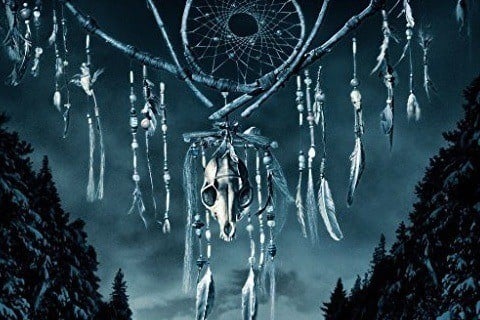In some Native American and First Nations cultures, a dreamcatcher or dream catcher is a handmade willow hoop, on which is woven a net or web. It may also be decorated with sacred items such as certain feathers or beads. Traditionally, dreamcatchers are hung over a cradle or bed as protection. It originates in Anishinaabe culture as "the spider web charm" – Ojibwe: asubakacin, lit. 'net-like'; bwaajige ngwaagan, 'dream snare' – a hoop with woven string or sinew meant to replicate a spider's web, used as a protective charm for infants. Dreamcatchers were adopted in the Pan-Indian Movement of the 1960s and 1970s and gained popularity as a widely marketed "Native crafts items" in the 1980s.
À propos de Dreamcatcher
Based on the 2001 Stephen King novel of the same name, the film tells the story of a group of friends who face off with parasitic aliens on a camping trip.
Réalisation de Dreamcatcher
The film was co-written by William Goldman and Star Wars writer Lawrence Kasdan. Goldman had previously adapted two other King stories to film: Misery (1990) and Hearts in Atlantis (2001).
Principaux faits que vous ne saviez pas sur Dreamcatcher
God's eye - A God's eye is a spiritual and votive object made by weaving a design out of yarn upon a wooden cross. Often several colors are used. They are commonly found in Mexican and Mexican American communities, among both Indigenous and Catholic peoples. Ojos de Dios are common in the Pueblos of New Mexico.. Indian Arts and Crafts Act of 1990 - The Indian Arts and Crafts Act of 1990 is a truth-in-advertising law which prohibits misrepresentation in marketing of American Indian or Alaska Native arts and crafts products within the United States.. American Indian relics.. Great Lakes tribal culture.. Anishinaabe mythology.. Objects believed to protect from evil.. Native American sculpture.. First Nations culture.. Amulets.. Dream.
Dernières informations sur Dreamcatcher mis à jour le 28 Juillet, 2021.










